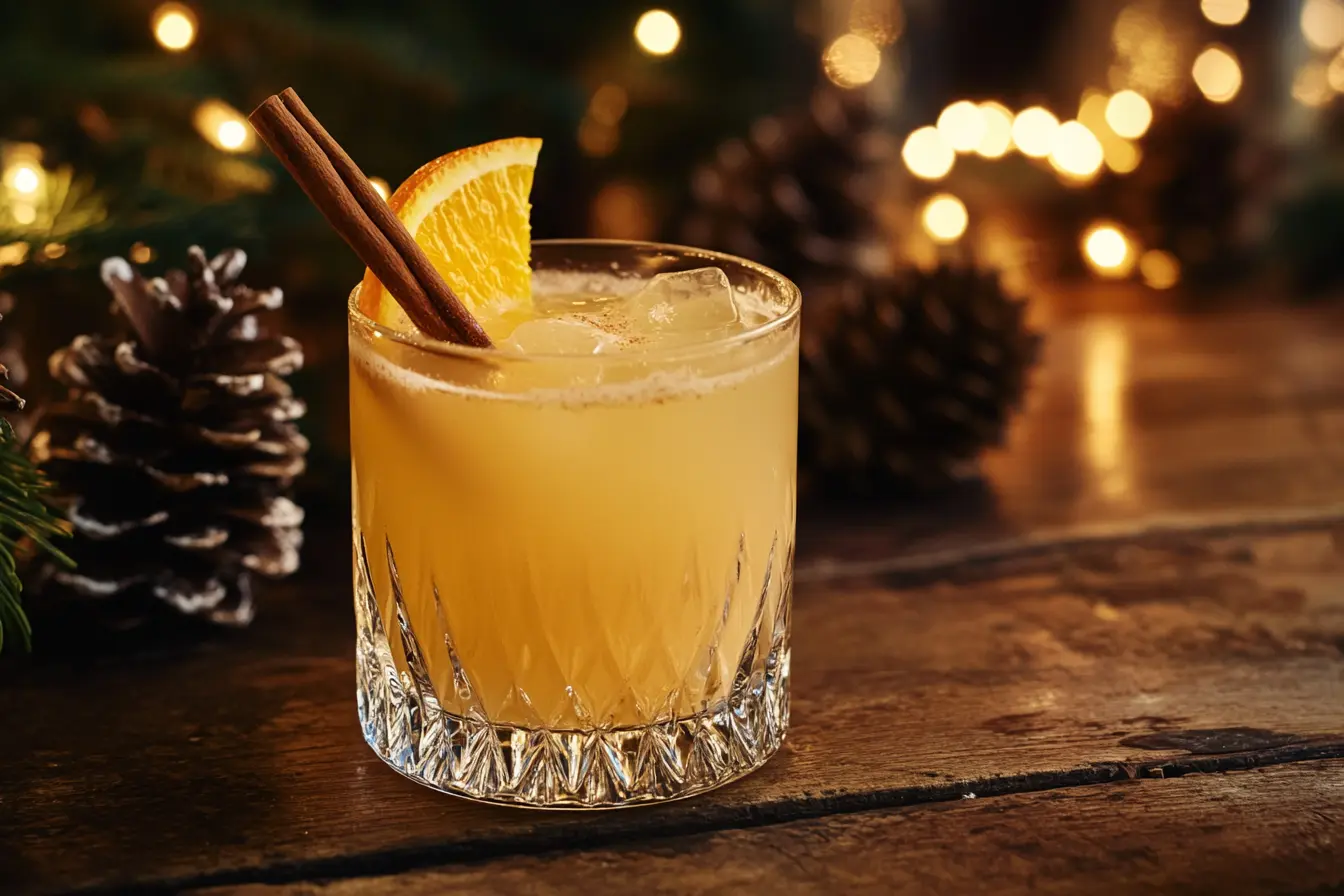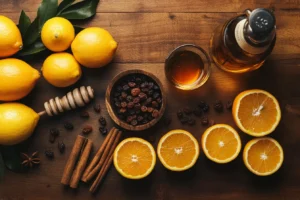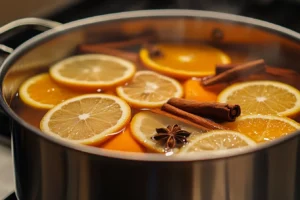Boilo, often called the “Coal Region’s Christmas Spirit,” is a cherished warm beverage with roots in Pennsylvania’s coal mining towns. This traditional yuletide drink is steeped in history, blending a medley of fruits, spices, and regional flair. Whether you’re savoring it on a snowy evening or sharing it during festive gatherings, a Boilo recipe is more than a drink—it’s a cultural experience. In this guide, we’ll walk you through its origins, preparation, serving tips, variations, and nutritional considerations to help you craft this beloved holiday classic.
Introduction to Boilo: Pennsylvania’s Yuletide Tradition
Origins and Cultural Significance
Boilo has deep roots in Pennsylvania’s Coal Region, where families have passed down recipes for generations. This drink traces its origins to European traditions, particularly those of Lithuanian immigrants who brought their version of spiced honey liqueur, known as krupnikas, to the United States. Over time, these traditions merged with local practices, creating a unique beverage that symbolizes warmth, togetherness, and resilience.
Historically, boilo was more than just a festive treat. It was a way to celebrate the season, connect with neighbors, and fend off the winter chill. The recipe’s adaptability allowed families to put their own spin on it, using whatever fruits and spices were available. Today, boilo is more than a nostalgic nod to the past—it’s a vibrant part of Pennsylvania’s holiday celebrations.
Boilo’s Evolution Over Time
Though its essence remains unchanged, boilo recipes have evolved to reflect modern tastes. While the traditional recipe incorporates citrus fruits, spices, and honey, contemporary versions explore a variety of flavor profiles. Some families experiment with additional fruits or sweeteners, while others tailor the spice mix to create a signature taste. Despite these variations, the heart of boilo remains the same: a warm, inviting drink that embodies the spirit of the season.
Boilo isn’t just a drink—it’s a story in a cup. And in every sip, you’ll taste the history, heritage, and holiday cheer that make this yuletide beverage so special.
Ingredients for Traditional Boilo
Essential Fruits and Spices
A great boilo recipe starts with fresh fruits and aromatic spices. Oranges and lemons are key for their zesty, bright flavors. Raisins, a classic addition, bring a gentle sweetness that balances the tangy citrus. For the spices, cinnamon sticks, cloves, and a pinch of anise are must-haves. These ingredients not only add flavor but also fill your home with the warm, inviting smell of the season.
Choosing the Right Sweetener
Honey is the go-to sweetener for boilo, and it’s easy to see why. Its smooth, natural sweetness blends perfectly with the spices. However, brown sugar or maple syrup can also work well if you want to try something new. Sweeteners are important to balance the bold flavors of the citrus and spices in this yuletide beverage.
For those interested in diverse ways to use honey, our guide on Peach Jalapeño Jam provides sweet and spicy inspiration.
Optional Add-ins for Flavor Variations
Want to mix it up? Add cranberries for a tart twist or apple slices for natural sweetness. A dash of nutmeg or vanilla extract can make the flavors even richer. These small tweaks let you create a version of boilo that’s uniquely yours while still keeping it true to its roots.
When choosing your ingredients, freshness is key. The better the quality, the more flavorful your yuletide drink will be. So, gather everything you need and get ready to enjoy the irresistible scent and taste of this holiday favorite.
Step-by-Step Guide to Making a Perfect Boilo Recipe
Preparing the Fruit Mixture for Your Boilo Recipe
First, gather your ingredients and start by slicing fresh oranges and lemons into thin, even rounds. This step ensures the juices will blend seamlessly into the mixture. Add these slices, along with a handful of raisins, to a large pot. The combination of citrus and dried fruit is essential to achieving the rich, tangy base of a classic boilo recipe. Stir gently, making sure the fruits are evenly mixed, but avoid crushing them at this stage.
Simmering the Spices for Maximum Flavor
Next, it’s time to bring in the spices, which are the heart of any yuletide beverage. Drop in whole cinnamon sticks, a few cloves, and a touch of anise for a deep, aromatic warmth. Cover the fruits and spices with enough water to submerge them, then bring the mixture to a gentle boil. Once boiling, lower the heat to a simmer, allowing the flavors to slowly infuse. Stir every now and then to prevent sticking, ensuring the spices spread their magic evenly throughout the pot.
Combining Ingredients to Perfect Your Boilo Recipe
After about 30 minutes of simmering, add honey or your chosen sweetener. Stir it in slowly to ensure it dissolves completely. This is also the perfect time to customize your boilo recipe. Consider adding a few cranberries for a tart kick or a splash of vanilla extract for a sweeter, more rounded flavor. Keep the heat low while you stir to avoid boiling, which could make the flavors too strong or bitter.
Straining and Storing Your Homemade Boilo
When the mixture has reached its peak flavor, carefully strain it through a fine-mesh sieve. Press gently on the fruits to release every last drop of liquid without adding pulp. Pour your boilo into a clean glass jar or bottle, letting it cool before sealing. Stored properly, this Coal Region drink can last for weeks, letting you enjoy its cozy taste whenever the mood strikes.
Serving Boilo: Traditions and Tips for Enjoying This Yuletide Beverage
Traditional Ways to Serve Boilo Recipe
For centuries, families in Pennsylvania’s Coal Region have cherished boilo during festive gatherings, and its traditional serving methods reflect this heritage. Boilo is often served warm, in small glasses or mugs, to highlight its rich flavors and warming spices. Because it’s such a comforting drink, it’s best enjoyed fresh from the stovetop or gently reheated for gatherings. The steaming aroma of cinnamon and citrus wafting from the glass is just one reason this yuletide beverage remains a favorite for cold winter nights.
Modern Twists to Elevate Your Boilo Recipe
While the traditional approach has its charm, there are plenty of modern ways to serve boilo. For example, you can garnish each glass with a cinnamon stick, a slice of orange, or even a few cranberries to make it look festive. If you’re hosting a holiday party, consider pouring boilo into a decorative carafe to create a beautiful centerpiece. These small touches can make your boilo recipe feel extra special and tailored to the occasion.
Pairing Boilo with Festive Treats
Another way to elevate your boilo experience is by pairing it with holiday treats. Serve it alongside cookies, spiced nuts, or slices of fruitcake to complement its warm and fruity flavors. Even simple snacks like buttery shortbread or a handful of roasted chestnuts can be a perfect match. Because boilo is such a flavorful drink, it enhances nearly any festive food you might serve, adding a sense of harmony to the celebration.
Boilo’s versatility, whether served traditionally or with a modern flair, ensures it shines as a centerpiece at any gathering. By experimenting with how you serve it, you can turn a timeless boilo recipe into something uniquely your own, while still honoring its rich heritage and festive spirit.
Pairing your Boilo with creative treats like this Bagel Dip Recipe can enhance your festive gatherings.
Variations of Boilo Recipes to Suit Every Taste
Exploring Unique Takes on the Traditional Boilo Recipe
While the classic boilo recipe has stood the test of time, modern adaptations offer exciting ways to experiment with its flavors. For instance, adding seasonal fruits such as apples or pears can give your boilo a sweeter, more refreshing twist. Alternatively, swapping out certain spices for nutmeg or cardamom allows you to create a completely different aromatic profile. With so many ways to customize this yuletide beverage, every batch can feel like a new adventure.
Apple Pie Boilo Recipe for a Comforting Flavor
One popular variation is apple pie boilo, which uses apple slices and a hint of cinnamon for a cozy, dessert-like drink. To make it, simply replace half the citrus fruits with freshly sliced apples and add a pinch of ground cinnamon and nutmeg to your spice blend. The result is a boilo that tastes like a warm slice of apple pie in a glass—perfect for a cozy winter evening.
Honeyberry and Blueberry Boilo Recipes for Fruity Twists
For a more vibrant take on the traditional boilo recipe, try incorporating berries. Honeyberry boilo, for example, features the tart sweetness of honeyberries, paired with the warm spices of the original recipe. Blueberry boilo, on the other hand, offers a deeper, richer flavor, especially when paired with a touch of vanilla extract. Both versions maintain the spirit of the original recipe while adding a splash of fruity excitement.
Consider blending the flavors of Boilo with other vibrant drinks, such as the Orange Tea Shot, for a refreshing modern twist.
Non-Alcoholic Boilo Recipes for Everyone to Enjoy
Finally, a non-alcoholic version ensures that everyone at your gathering can enjoy this yuletide drink. Substitute the alcohol base with apple cider or a mix of orange and cranberry juice. The spices and fruits remain the same, creating a delicious and inclusive option for holiday celebrations.
By exploring these variations, you can craft a boilo recipe that suits any occasion or preference, proving that this beloved drink is as versatile as it is timeless.
Nutritional Information and Considerations for Your Boilo Recipe
Caloric Content and Serving Size of Boilo Recipe
While enjoying a warm boilo recipe is undeniably delightful, it’s helpful to consider its nutritional value. A single serving, which is typically a small glass, contains a mix of natural sugars from fruits and honey, along with a calorie count ranging between 150 and 200, depending on the ingredients. Adding more honey or sweet fruits, like apples or raisins, can slightly increase the calorie count. However, because boilo is served in small portions, it remains a relatively moderate treat when consumed responsibly.
Health Considerations When Enjoying Boilo
The combination of spices and fruits in a yuletide beverage like boilo brings more than just great flavor—it also offers potential health benefits. Spices such as cinnamon and cloves are rich in antioxidants, which can support your immune system during the colder months. Citrus fruits provide a boost of vitamin C, while honey has natural soothing properties. Nevertheless, moderation is key, as the natural sugars and sweeteners in boilo can add up if consumed excessively.
Tips for Responsible Enjoyment of Boilo Recipe
Because boilo is a festive drink meant to be shared, it’s important to enjoy it responsibly. Serve it in small portions to appreciate its bold flavors without overindulging. If you’re offering variations like non-alcoholic boilo, clearly label each option so everyone can make informed choices. Moreover, store any leftover boilo in a cool, dark place, as this helps preserve its taste and quality for future celebrations.
By understanding the nutritional profile and considering portion sizes, you can savor your boilo recipe guilt-free while enjoying all the warmth and nostalgia it brings to the holiday season.
Frequently Asked Questions About Boilo Recipe
What is the origin of the boilo recipe?
The boilo recipe has its roots in Pennsylvania’s Coal Region, inspired by the Lithuanian drink krupnikas. Immigrants adapted the original spiced honey liqueur to include locally available fruits and spices, creating the beloved yuletide beverage that remains a holiday staple today.
Can boilo be made without alcohol?
Yes! A non-alcoholic boilo recipe can be made by replacing the alcohol with apple cider or a mix of orange and cranberry juice. The spices and fruits stay the same, ensuring you still get the warm, festive flavors of the traditional version.
How long does homemade boilo last?
When stored properly in a sealed glass jar or bottle, boilo can last up to several weeks. Store it in a cool, dark place to preserve its flavor and freshness. Always reheat it gently to preserve its original taste.
What types of fruits and spices are best for boilo?
Oranges, lemons, and raisins are the classic fruits for a boilo recipe, while cinnamon sticks, cloves, and anise add depth and warmth. However, you can also customize your recipe with apples, cranberries, or even nutmeg for unique variations.
Is boilo traditionally served hot or cold?
Traditionally, boilo is served warm to highlight its comforting spices and citrus flavors. Heating it also brings out its inviting aroma, making it ideal for chilly winter nights or festive gatherings.
Can I adjust the spices in my boilo recipe?
Absolutely! The beauty of a boilo recipe is its flexibility. You can add more cinnamon for a sweeter touch or include nutmeg for a slightly nutty flavor. Feel free to experiment until you discover the blend that best suits your taste.
By addressing these common questions, we hope to make preparing and enjoying your boilo recipe an even more rewarding experience. Whether you’re trying this yuletide beverage for the first time or continuing a family tradition, boilo is sure to add warmth and joy to your holiday celebrations.
Conclusion
Boilo is more than a drink; it’s a beloved cultural tradition that unites people during the holiday season. From its humble beginnings in Pennsylvania’s Coal Region to its modern-day variations, this yuletide beverage has stood the test of time, warming hearts and homes with every sip. Whether you stick to the traditional boilo recipe or experiment with creative twists, the joy of sharing this drink with family and friends is what truly makes it special.
By using fresh ingredients, balancing the spices, and serving it with care, you can craft a boilo that embodies the spirit of the holidays. As you gather around to share stories and laughter, let this iconic drink remind you of the simple pleasures of the season. So, gather your ingredients, roll up your sleeves, and add a touch of tradition and warmth to your celebrations with a glass of homemade boilo.


